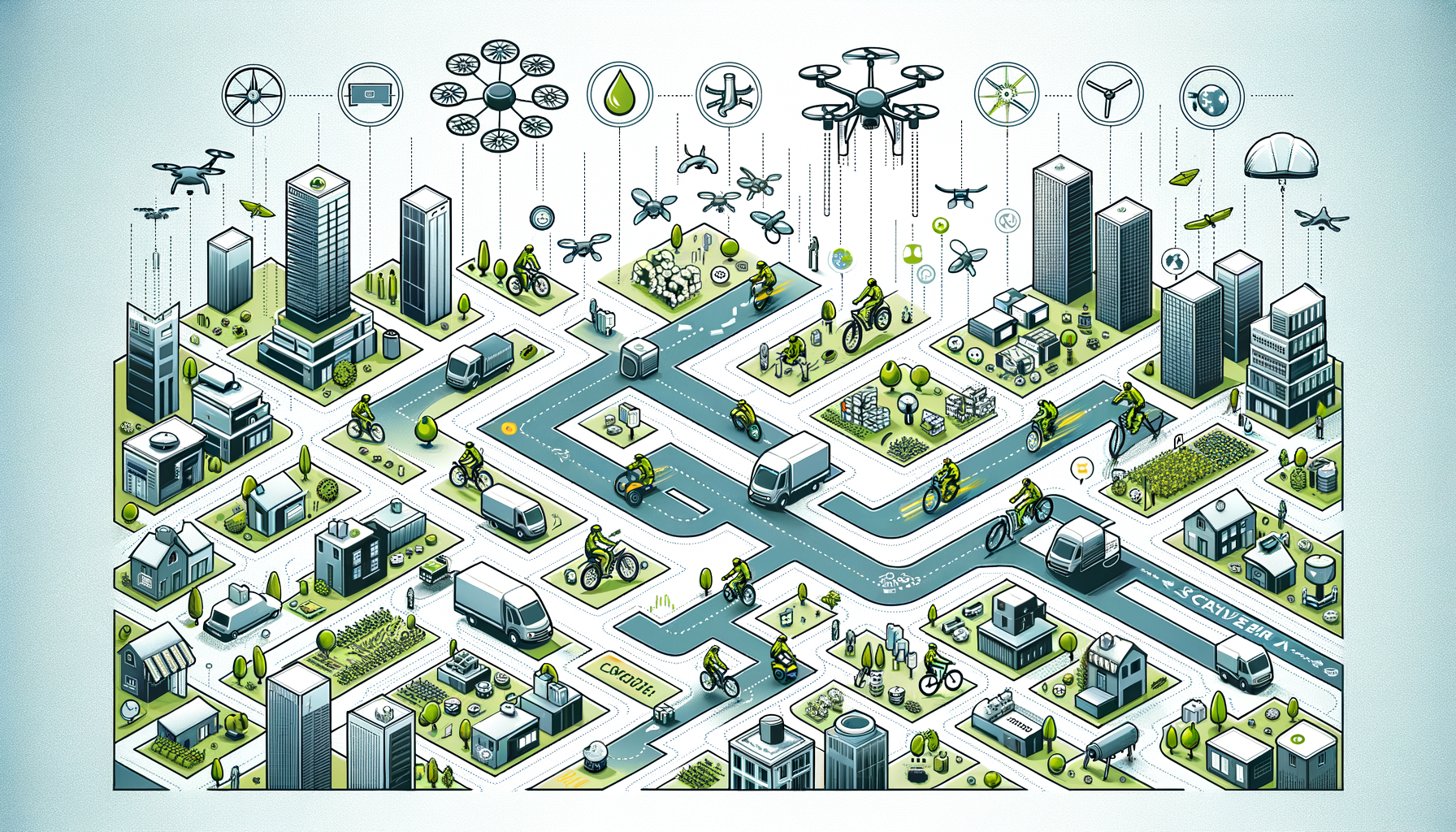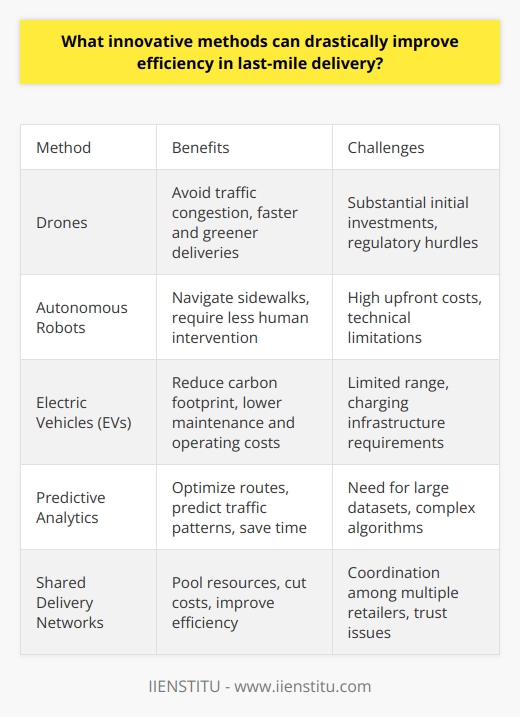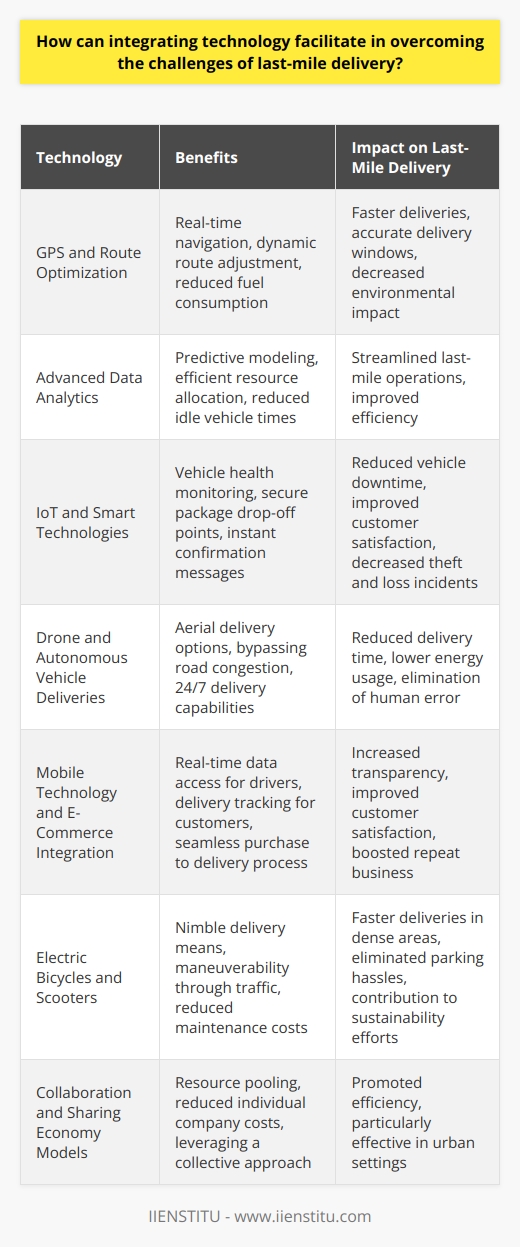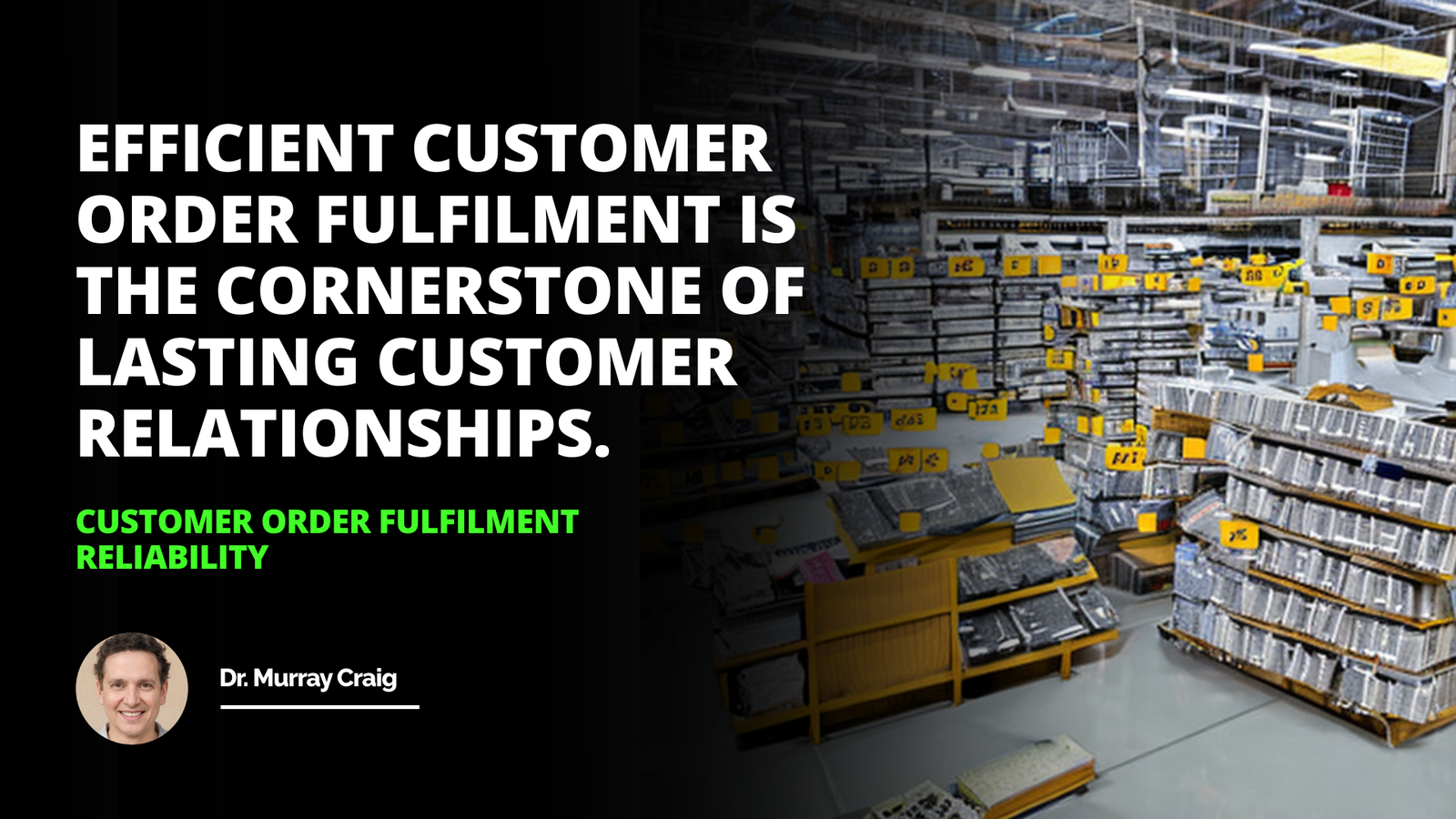
In the age of accelerated digital commerce and heightened customer expectations, logistics stands as a critical domain meeting the promises of swift delivery and superior service.
Last-Mile Delivery has emerged as the final, and possibly most significant, frontier in the logistics industry, and optimizing this segment can result in substantial gains in efficiency and customer satisfaction. With increasing logistics course fees and a plethora of online courses with certificates attesting to the growing demand for skilled logistic professionals, the focus on Last-Mile Delivery is sharper than ever.
This article will delve into the significance of Last-Mile Delivery, illuminate the challenges encountered therein, and explore strategies for its optimization, drawing upon comprehensive knowledge and a user-oriented expert approach.
Introduction to Last-Mile Delivery
Last-Mile Delivery is the final step in the delivery process, a term that has become synonymous with not just the movement of goods, but the fulfillment of modern-day consumer demands. The distillation point between the product and the customer, the Last-Mile can make or break the delivery experience. This critical leg of the journey is where companies face their greatest logistical hurdles, grappling with traffic, diverse delivery destinations, and customer availability.
The importance of Last-Mile Delivery in the context of supply chain and logistics cannot be overstated. It's this final segment that often determines the overall efficiency of the delivery network, directly impacts customer satisfaction, and represents a considerable portion of the total shipping costs. In an era where eCommerce is king, the Last-Mile Delivery turns into a competitive battleground, where the efficiency, speed, and reliability of service set companies apart.
Despite its critical status within supply chain management, Last-Mile Delivery is notoriously difficult to optimize. Factors such as route complexity, urban density, and fluctuating consumer demands create unique challenges which demand precise, agile solutions. This last stage of logistics is being scrutinized and improved upon continuously, employing both innovative technologies and strategic foresight to enhance delivery performance and uphold high customer service standards.
Challenges of Last-Mile Delivery Optimization
Inefficiency in Route Planning
In the complex ecosystem of Last-Mile Delivery, efficiency in route planning emerges as a make-or-break component. Poor route planning can be a costly misstep, leading to delays, increased fuel consumption, and frustrated customers. When drivers crisscross through cities on ill-conceived routes, the repercussions resonate throughout the entire supply chain, often eroding thin profit margins.
Introducing technology to this equation is akin to charting a path through untamed wilderness. Sophisticated software can analyze historical traffic patterns, predict delays, and suggest the most efficient routes, turning the art of route planning into a precise science. Logistics providers are increasingly eyeing these technological aides to shave off critical minutes from delivery times, thereby boosting overall productivity.
Real-world examples teem with instances of inefficiency laid bare by poor route planning. One pertinent case involved a renowned courier company that, before the introduction of advanced route optimization solutions, saw its drivers habitually taking circuitous paths, racking up extra miles that tallied up to significant annual losses. The implementation of a dynamic route planning algorithm led to a drastic decrease in unnecessary mileage and, subsequently, a marked improvement in delivery efficiency.
Lack of Transparency
Another challenge that Last-Mile Delivery grapples with is the cold fog of opacity that often surrounds it. A lack of real-time data and transparency not only hampers the operation's nimbleness but also undermines customer trust. As modern consumers demand greater control over their delivery experience, opacity becomes an even greater liability.
Improving transparency in Last-Mile Delivery brings tangible benefits, not just in terms of tracking but also in fostering a more collaborative and responsive relationship between courier services and customers. Sharing real-time data empowers customers to prepare for their deliveries and provides businesses with the agility to deal with unexpected events while keeping everyone informed.
Case studies have repeatedly shown the effects of transparency, or the lack thereof, in Last-Mile Delivery. Notably, a study analyzing the impact of offering real-time tracking capabilities to customers revealed increased rates of first-time delivery success, reduced customer service calls, and heightened overall customer satisfaction. This underlined the critical need for transparency to sustain a fluid last-mile experience.
Strategies for Last-Mile Optimization
Leveraging Technology for Improved Route Planning
Advances in technology offer a buffet of solutions for improving route planning in Last-Mile Delivery. High-end algorithms, machine learning models, and even drone technology are infiltrating this space, suggesting near-optimal paths and adjusting routes on-the-fly in response to evolving traffic conditions. These technological tools learn and adapt, creating data-driven routes that bypass bottlenecks and navigate urban mazes with finesse.
This incursion of technology brings with it a transformation of Last-Mile optimization strategies, transmuting hunch-based planning into data-driven decision making. Furthermore, integration with other digital tools such as Enterprise Resource Planning (ERP) and Customer Relationship Management (CRM) systems enhances the approach, creating a seamless chain of information that informs each delivery journey.
Studies highlighting the efficacy of technological interventions are fervent and persuasive. Incorporating real-time weather data, for instance, has allowed logistic operations to anticipate and circumvent delays, substantiating the utility of predictive analytics in Last-Mile optimization. Through these technological advancements, route planning evolves from being a simple navigational task to a complex orchestration of variables, all harmonized to ensure timely deliveries.
Enhancing Transparency through Real-Time Tracking
To augment the customer experience and streamline operational efficiency, real-time tracking serves as a linchpin in Last-Mile optimization. Modern real-time tracking tools provide a window into the delivery process, offering customers and logistics operators alike valuable insights into the whereabouts of their shipments.
These tools do more than just placate curious customers; they serve a strategic function in Last-Mile Delivery optimization. By offering real-time tracking, businesses can dynamically adjust to the unexpected—whether it be rerouting drivers around accidents or pacifying customers with accurate ETAs during unavoidable delays.
Case studies corroborate the transformative power of real-time tracking. Food delivery services, for instance, have leveraged this feature to improve customer satisfaction, allowing patrons to watch their order from preparation to arrival at their doorstep. Such visibility has not only enhanced customer experience but has also led to better fleet utilization and faster delivery times for these services.
The Future of Last-Mile Optimization
The domain of Last-Mile Delivery is at the cusp of an evolving revolution, driven predominantly by the incessant augmentation of technology. As self-driving vehicles, AI-powered logistics platforms, and delivery drones begin to permeate the market, the face of Last-Mile Delivery optimization is morphing into something both dynamic and more efficient.
The future of this logistics segment is fertile with the potential for novel technologies and breakthrough strategies, which may redefine the speed and precision of Last-Mile Delivery. Predictive analytics, autonomous delivery robots, and smart locker networks are some of the innovations poised to escalate service levels and trim inefficiencies, symbolizing the relentless pursuit of logistical excellence.
In conclusion, the vital role of Last-Mile optimization in the wider context of efficient logistics management cannot be magnified enough. As the world marches towards an ever-more interconnected and delivery-dependent future, nurturing the efficiency and capability of Last-Mile Delivery operations will remain central to the success and sustainability of any logistics endeavor, rewarding those who invest in innovation and customer-focused approaches.
Frequently Asked Questions
What innovative methods can drastically improve efficiency in last-mile delivery?
Last-Mile Delivery Efficiency
Current Challenges
Last-mile delivery faces many issues. Traffic congestion slows deliveries down. Failed delivery attempts increase costs. Customer expectations are high and growing. Retailers need cost-effective, fast solutions.
Technological Innovations
Drones offer a futuristic solution. They fly above traffic. Deliveries become faster and greener. Robots can navigate sidewalks autonomously. They require less human intervention. These solutions imply substantial initial investments.
Electric Vehicles (EVs) in urban delivery reduce the carbon footprint. They are ideal for shorter routes. Maintenance and operating costs are lower.
Data and Algorithms
Predictive analytics optimize delivery routes. They take historical data into account. Traffic patterns become predictable. Efficient routes save time.
Dynamic routing algorithms adjust in real-time. Drivers reroute around traffic and obstacles. Delivery estimates become more accurate.
Machine learning enhances logistics. It identifies trends and optimizes operations. The system learns from every delivery.
Collaborative Economy
Shared delivery networks pool resources. Multiple retailers use the same delivery service. They cut costs and improve efficiency.
Micro-warehousing brings products closer to customers. Inventory locates near high-demand areas. Delivery times shorten.
Customer-Centric Strategies
Delivery scheduling empowers the customer. They choose time slots. Failed deliveries reduce. Customer satisfaction increases.
Real-time tracking ensures transparency. Customers see their package's journey. Anxiety over delivery timing diminishes.
Localized Approaches
Urban fulfillment centers solve many problems. Distance to customers shortens. Delivery becomes quicker. Traffic headaches lower.
Parcel lockers provide flexible pick-up options. They are secure and convenient. No need for couriers to find customers.
Human-Centric Training
Improved driver training is crucial. Drivers learn to use advanced tools. They become more efficient. Their satisfaction is important too.
Employee incentives motivate performance. They align personal goals with company aims. Efficiency often improves.
Last-mile efficiencies require innovative thinking. Investments in technology are necessary. Smart data usage is key. Collaborative approaches offer opportunities. Efficiency gains translate to customer satisfaction. The future of delivery looks bright and efficient.

How can integrating technology facilitate in overcoming the challenges of last-mile delivery?
Technology Role in Enhancing Last-Mile Delivery
Understanding Last-Mile Delivery Challenges
Last-mile delivery poses multiple challenges. Costs can be significant here. Consumer expectations often demand rapid delivery. Urban congestion can impede timely deliveries. It is crucial to address these complexities.
GPS and Route Optimization
Route optimization stands as a key technology. GPS tracking enables real-time navigation. It allows dynamic route adjustment. Drivers can avoid traffic jams and delays. Route optimization leads to faster deliveries. Fuel consumption reduces. The environmental impact decreases. Delivery windows become more accurate.
Advanced Data Analytics
Data analytics enables predictive modeling. Delivery demand in areas becomes forecastable. Carriers can efficiently allocate resources. It aids in reducing idle vehicle times.
Analytics tools track delivery patterns.
Predictive algorithms suggest optimal delivery times.
Patterns in customer availability get analyzed.
These measures streamline last-mile operations.
IoT and Smart Technologies
Internet of Things (IoT) facilitates connectivity. Delivery vehicles and devices stay interconnected. Sensors monitor vehicle health. Maintenance issues get predicted. This reduces vehicle downtime.
Delivery lockers are becoming "smart". They offer secure package drop-off points. Confirmation messages get sent instantly. Customer satisfaction improves. Theft and loss incidents decrease.
Drone and Autonomous Vehicle Deliveries
Drones present transformative potential. They offer aerial delivery options. Drone deliveries bypass road congestion. They can reduce delivery time. Energy usage may be lower compared to trucks.
Autonomous vehicles are on the horizon. Their potential benefits mirror those of drones. They will be able to navigate traffic. These vehicles could deliver around the clock. Human error gets removed from the equation.
Mobile Technology and E-Commerce Integration
Smartphones facilitate smooth last-mile delivery. Drivers access real-time data. Delivery status updates instantly. This creates transparency across the process.
E-commerce platforms are integrating mobile solutions. Delivery tracking becomes available for customers. Purchase to delivery becomes a seamless process. Customer satisfaction increases. It boosts repeat business.
Electric Bicycles and Scooters
Urban centers are adopting electric bikes. They offer nimble delivery means. Scooters and bikes maneuver through traffic. Parking hassles get eliminated. Deliveries in dense areas become faster.
They are less costly to maintain. Running them generates lower emissions. This contributes to sustainability efforts.
Collaboration and Sharing Economy Models
Sharing economy principles are entering logistics. They allow for resource pooling. Multiple retailers share delivery infrastructure. It reduces individual company costs.
Collaborative delivery models are emerging. These promote efficiency. They leverage a collective approach. They are particularly effective in urban settings.
Integrating technology offers significant advantages. It tackles the nuanced challenges of last-mile delivery. Each tech solution addresses specific issues. Efficiency, speed, and sustainability benefit. Customer satisfaction improves. Adopting these technologies is critical. Logistics companies must remain competitive. They have to meet evolving consumer demands. Technology is essential for the future of delivery services.

What role does customer behavior play in enhancing the efficiency of last-mile delivery?
Understanding Customer Behavior
Customer behavior holds critical importance in last-mile delivery. It shapes efficiency notably. Delivery companies thrive on reliable data. This data stems mainly from customer interactions. Therefore, understanding behavior patterns is pivotal.
Key Influences of Customer Behavior on Delivery Efficiency
Preferences dictate logistics. Customers prefer various delivery options. These include same-day delivery or scheduled time slots. Aligning logistics to these preferences enhances service satisfaction. It significantly reduces failed delivery attempts. Fewer failed attempts mean fewer redelivery costs.
Flexibility leads to fewer delays. Customers who offer broader time frames for delivery help companies plan better. These customers contribute to route optimization. Efficiency in routing directly benefits the last-mile delivery.
Feedback drives improvement. Customer feedback offers direct insight into performance. It highlights what works and what doesn't. Companies use this feedback for refining operations. Continuous improvement in last-mile delivery stems from this iterative process.
Predictability reduces waste. Predictable customer behavior allows for better stock management. Better management equals reduced waste. It leads to a smoother last-mile operation. Companies can pre-position goods closer to customers.
- Communication is key. Clear communication with customers can prevent misunderstandings and delays. It also ensures that customers are available to receive deliveries, increasing the probability of first-attempt delivery success.
Factors Deriving From Customer Behavior
Technology adoption influences efficiency. Customers adopting new technologies fuel growth in delivery options. They enable real-time tracking and better customer-driver interactions. These technologies aid in creating dynamic delivery networks.
Demand patterns shape stocking strategies. Recognizing and responding to customer demand patterns adjust inventory levels. That creates efficient dispatching. Ultimately, it minimizes the distance from the warehouse to the customer.
Sustainability concerns affect decisions. Eco-conscious customers prefer sustainable delivery options. Companies respond by optimizing routes and reducing packaging. This behavior steers industry practices toward greener solutions.
Consequences of Ignoring Customer Behavior
Service suffers without customer insights. Ignoring customer behavior results in a disconnect. This disconnect can cause inefficiencies in service provision. It often leads to customer dissatisfaction and loss.
Costs could escalate. Uninformed decisions about customer preferences can lead to increased costs. These costs arise from inefficient routing and multiple delivery attempts. Understanding behavior minimizes these unnecessary expenses.
Reputation may dwindle. Failing to meet customer expectations impacts reputation. Reputation affects customer loyalty and, ultimately, business success. Acknowledging and adapting to customer behavior maintains a positive brand image.
Customer behavior is not a static element. It evolves continually. Companies must keep pace with this evolution. They must integrate it into their last-mile delivery strategies. Doing so is non-negotiable for efficiency and competitiveness. Customers drive the demand that shapes the future of delivery. Their behavior is a valuable compass guiding the path to improved last-mile delivery efficiency.



